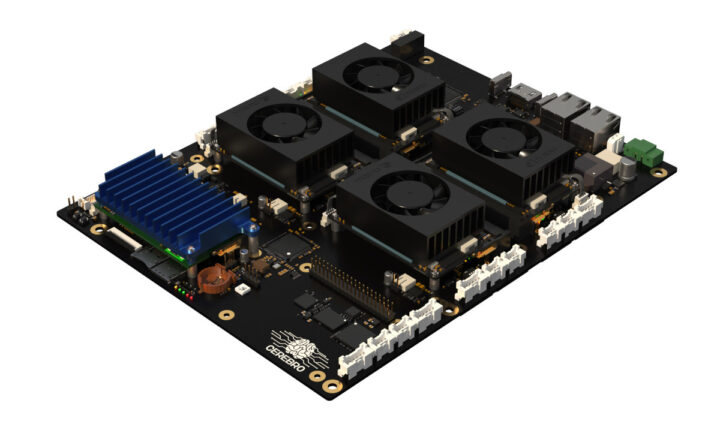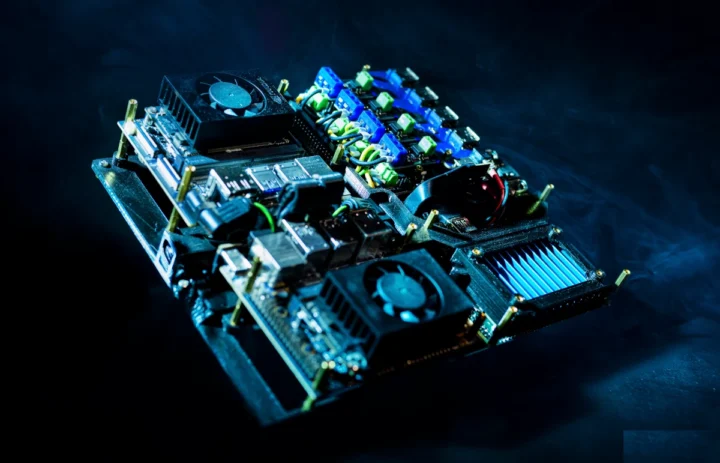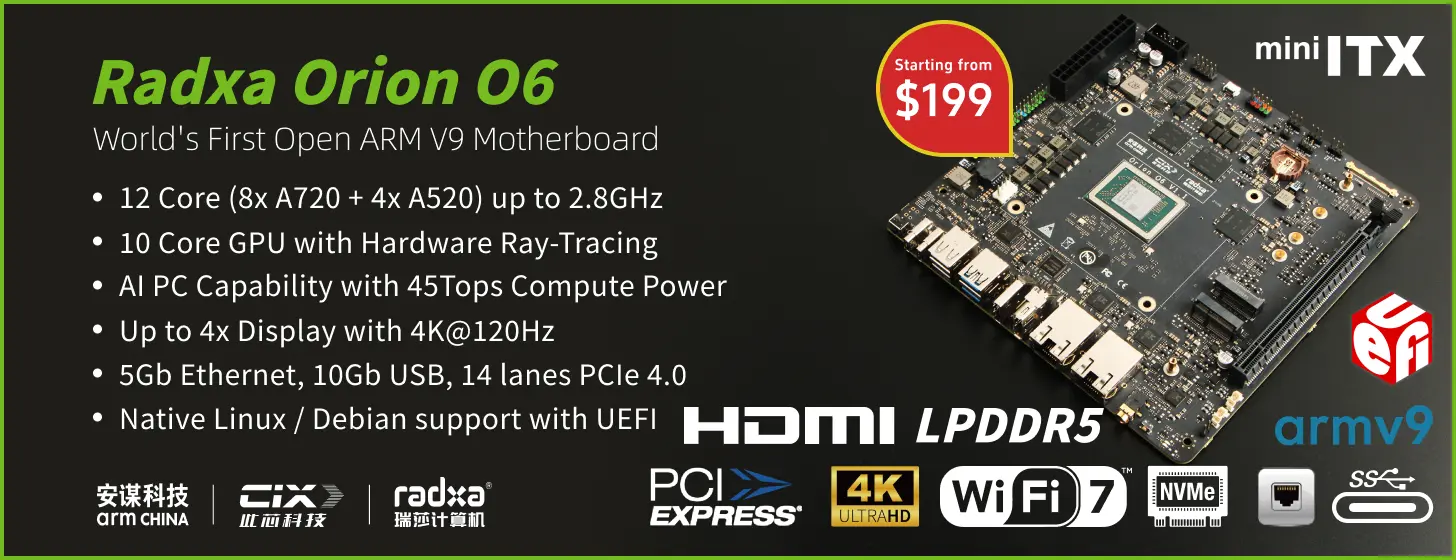Cerebro is a modular board / clusterboard designed to take up to four system-on-modules such as NVIDIA Jetson SO-DIMM modules, Raspberry Pi CM4 or CM5, or Radxa CM5. The board integrated a BMC for intercommunication between the CPU modules.
The Cerebro was designed out of frustration as the team at Sparklab Solution could not find a solution where boards would work together seamlessly. While there are other clusterboards for Raspberry Pi Compute modules, the Cerebro motherboard provides more flexibility with three M.2 sockets per node, a built-in BMC and optional expandable BMC, KVM support between each node, dual Ethernet, a 10 Gbps USB 3.2 port, and more.

Specifications:
- Compute Modules
- 4x SODIMM-260 slots
- Compatibility
- Nvidia Jetson Orin NX/Nano
- Raspberry Pi CM4/CM5 via adapter
- Radxa CM5 via adapter
- Supports mix and match of different models
- Storage
- 2x M.2 key-M slots per node (8x in total) for NVMe SSD
- 1x MicroSD card slot
- Video Output
- HDMI multiplexer for shared video output across nodes and BMC
- MIPI DSI connector
- Networking
- Internal Gigabit Ethernet with VLAN compatibility
- Two uplink ports
- USB – USB 3.1 Gen2 (10 Gbps) and USB 2.0 ports
- Expansion
- 2x M.2 Key-M slots per node (8x in total) for storage or AI accelerator
- 1x M.2 key-E slot per node (4x in total) for wireless
- M.2 slot connected to the BMC
- 40-pin GPIO header
- Board management module (BMC)
- Onboard controller for power cycling, monitoring, and fan control
- Expandable BMC – Toradex Verdin compliant slot for more options and performance
- Misc
- Built-in RTC
- RGB LED; multiple LEDs
- Cooling – 5x PWM fan headers for active cooling; passive cooling options available
- Full KVM Integration to switch between nodes using a single monitor, keyboard/mouse setup
- Power Supply – Up to 72V; 50W PSU
- Dimensions – 244 x 190 mm (Compatible with Micro-ATX enclosures)


There’s limited information about software support, but we’re told the Cerebro works “with a wide range of software solutions, including popular Linux distributions, Kubernetes setups, and containerized environments”.
The company made a proof-of-concept using NVIDIA Jetson developer kits, but they only show renders of the final product, and there’s no demo with a prototype of the board that will be sent to backers in the introduction video.
The closest competitor is the Turing Pi 2 / Turing Pi 2.5 mini-ITX motherboard that also takes up to four SoMs via a 260-pin SO-DIMM connector, but with fewer expansion capabilities. In some ways, the Cerebro clusterboard is a larger and more advanced Turing Pi board, which retains NVIDIA Jetson and Raspberry Pi CM4/CM5 compatibility, but is equipped with thirteen M.2 sockets (instead of two mPCIe sockets), and offers support for an advanced BMC and a few other extra features.
Sparklab Solution launched the Cerebro clusterboard on Kickstarter, aiming to raise over $1.2 million. Rewards start at 429 Euros (or about $488) for the first 200 backers, and shipping will be charged after the campaign ends. Rewards are expected to ship by February 2026, which is not surprising since there’s no working prototype of the final Cerebro board. The project might be interesting, but it looks like a risky project to bet on, and the funding target will also be a challenge to reach unless I underestimate the demand for this type of board.

Jean-Luc started CNX Software in 2010 as a part-time endeavor, before quitting his job as a software engineering manager, and starting to write daily news, and reviews full time later in 2011.
Support CNX Software! Donate via cryptocurrencies, become a Patron on Patreon, or purchase goods on Amazon or Aliexpress. We also use affiliate links in articles to earn commissions if you make a purchase after clicking on those links.




